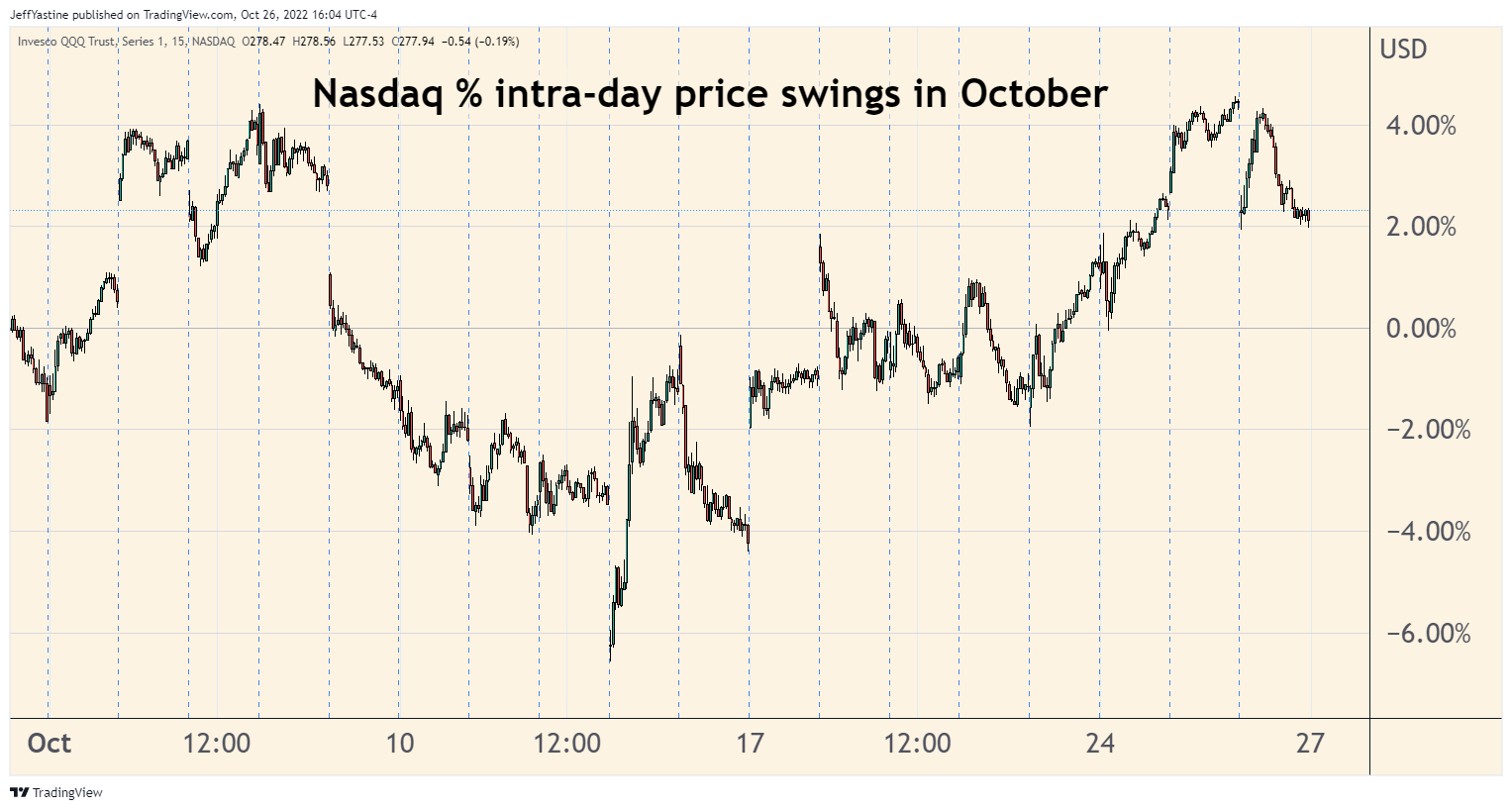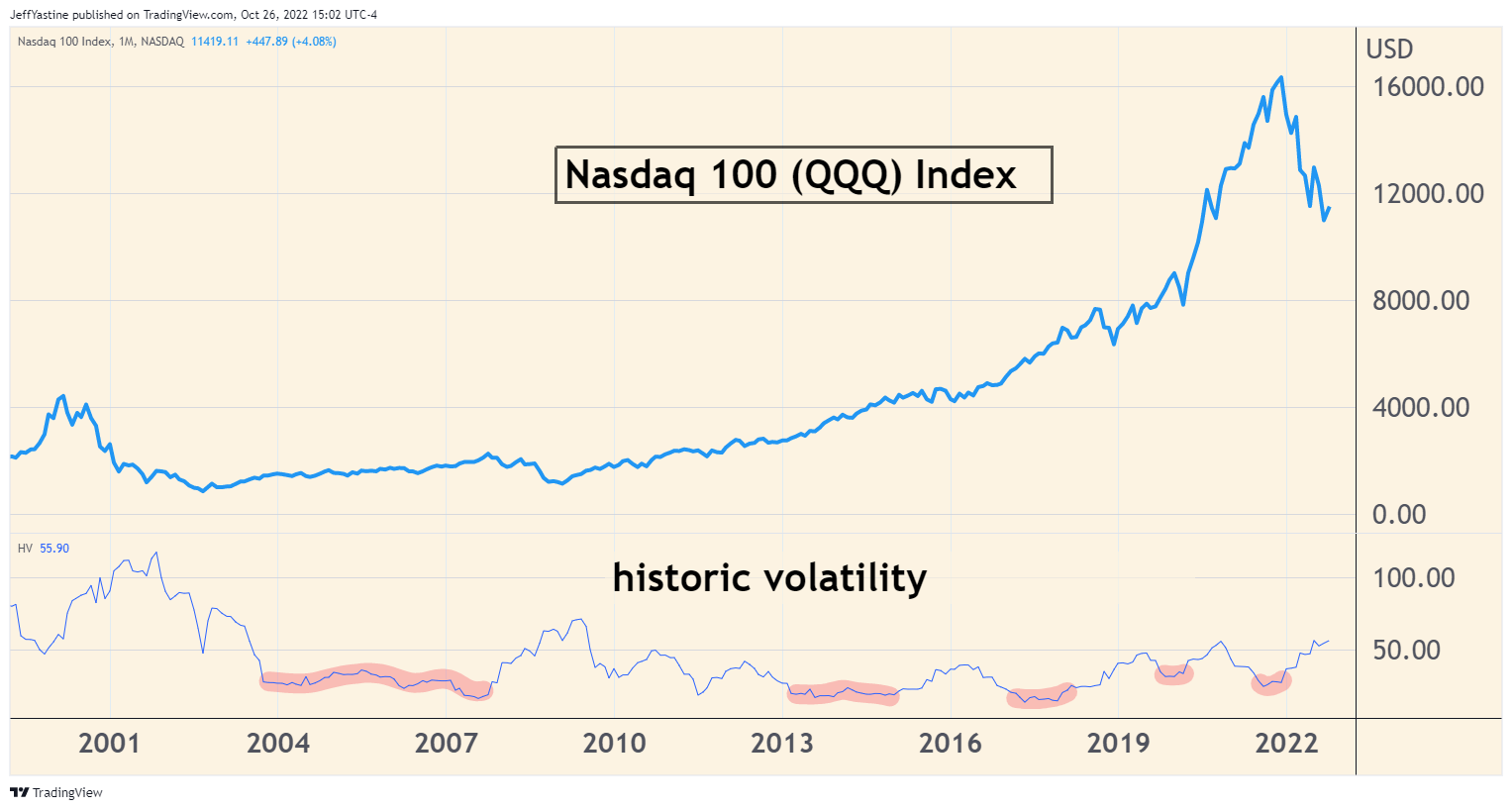Volatility Kills (Your Portfolio)

I remember when I was taking Drivers Ed classes in high school...
The teacher would make my classmates and I watch an old-fashioned film movie with a title like "Speed Kills" - complete with graphic carnage of mangled car wrecks, the results of unfortunate drivers who went too fast and lost control.
The stock market movie-equivalent would be "Volatility Kills."
Volatility is the catch-all word to talk about the extreme swings in the prices of stocks and the stock market.
"Vol" can be a good thing. After all, no one complains when a stock rises 5% or 10% a day or two - as many stocks have in the past week (before today, anyway).
But we all complain loudly about volatility when our stocks, or the indexes, drop by that much in a short period of time.
Today was a good example of the danger.
When I started writing this post, the Nasdaq was up 2%. And by the time I was finished writing, the index was down more than 2.25%!

That's volatility.
Here's the part no one tells you. I had to learn it myself.
In the mid-to-late innings of a bull market, no one really thinks too much about volatility. As you can see in the chart below, volatility levels - marked in red - typically shrink.

No one thinks about volatility during the latter part of a bull market because everyone is reluctant to sell. So stocks just don't move around quite as much.
In other words, the indexes are working their way higher. We have confidence in the future. In the lingo of Las Vegas gamblers, we're comfortable letting our money ride on the craps table.
It's only after the initial phase of a bear market, and many of us have that "Oh sh**"-moment for the first time...that our confidence is shaken.
Volatility returns with a vengeance.
Volatility Kills
So when volatility starts to swing wildly, we have to adapt to it in important, practical ways - or we risk damaging our portfolios even more in the midst of a bear market.
Here's what I mean...
Let's say I have a modest $100,000 portfolio. In a bull market, I may have gotten used to buying a certain set amount of shares - 100 shares, 1,000 shares, etc - when buying a stock.
And in a bull market, the risks seemed to work in my favor. Volatility levels are low, so stocks don't swing that wildly in price anyway. And when volatility does pick up a notch or two, the odds say I'll benefit from the volatility - remember, we're in a bull market so chances are my stocks will move higher in price.
But in a bear market - and even in the early, uncertain phases of new bull markets - everything works in reverse.
A company reports disappointing earnings results, and before the ink is dry on the (digital) press release - BOOM! The stock is already down 20%.
And then there are days like today, where the market appears strong. We all have the urge to buy something, maybe even do a little day-trading, and perhaps make back a little of our bear market losses.
And no sooner do we put in a nice big fat buy-order for a new favorite stock...and suddenly the market reverses course and starts sinking like an elephant in quicksand.
The Solution
I show my premium subscribers how to calculate an optimum number of shares to buy, relative to the size of our portfolios. But some folks have their own ways of doing things, and that's OK too.
The key thing is just to remember that when we invest and trade through a bear market, the odds are against us (for the moment). So it's possible to buy good stocks and still have larger-than-comfortable losses in our portfolios.
So do yourself a favor and just buy less.
If you're used to buying 1,000 shares at a clip...buy 500. If you liked to buy 100 shares...buy 50 instead.
Yes, it means you make less when the market rallies.
It also means you lose less as volatility levels rise - and gives you the staying power to see your financial goals through the best and worst of stock markets.
Jeff Yastine
Member discussion